This post was updated June 2023. Additions include a photograph of the house Glen Huntly, earlier records of the house, who built it, and how it got its name.
In the second of a series of posts, I hope to add a little more detail to the people and places mentioned in Robert Griffiths’ history of Toxteth Park, written in 1907.
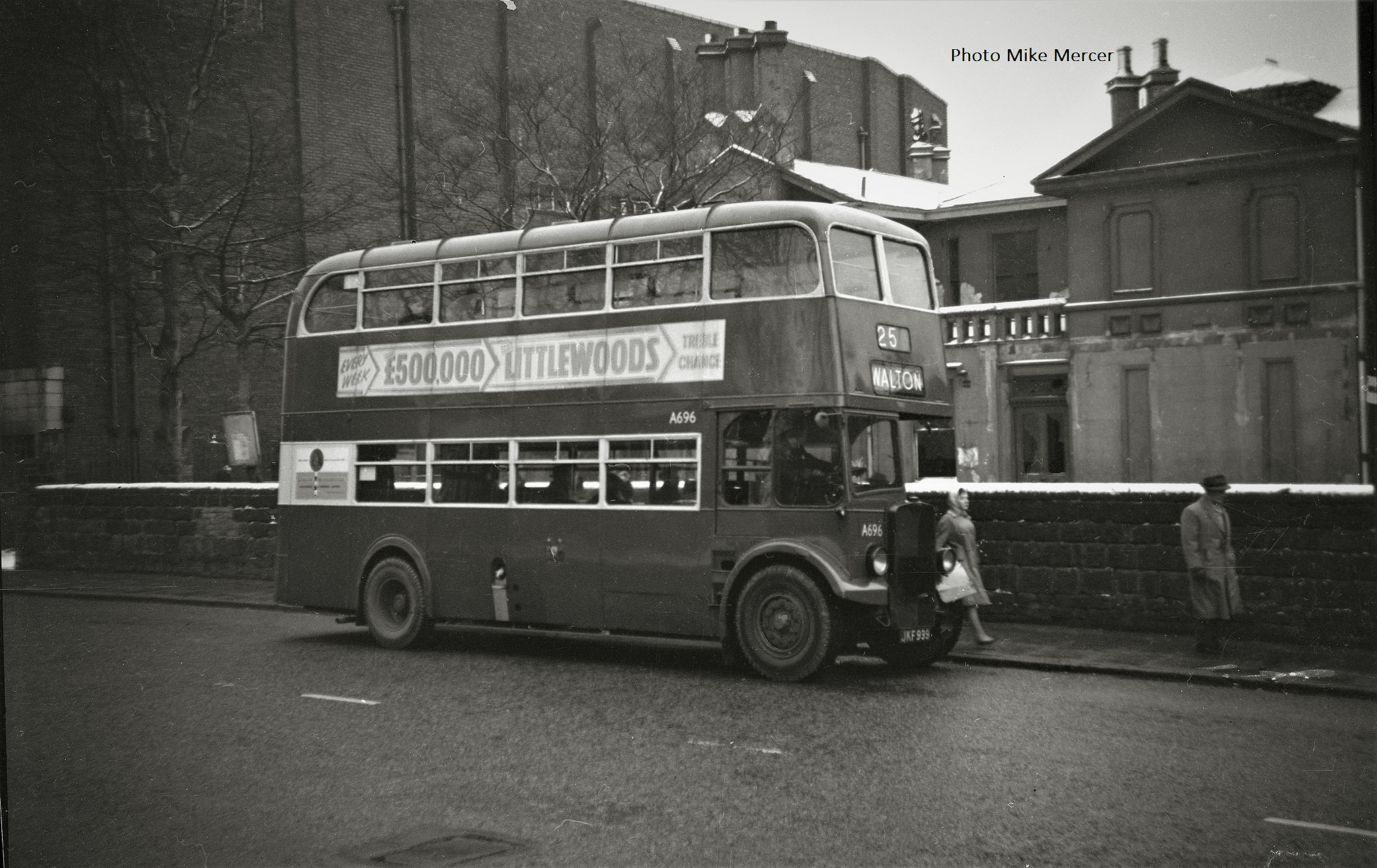
I have had some great feedback and questions about the House “Glen Huntly” (the origin of my author name) and has led me into looking up some of the House’s history. Although not on the Cast Iron Shore, The house and the neighbouring buildings were close to St Micheal’s Hamlet. Glen Huntly (later called Glen Toxteth) occupied the site on Aigburth Road now spanned by Home Bargains on the corner of St Michael’s Road to the “High Street Solicitors” (the old Roughley’s newsagent).
The Home Bargains store stands on the site of the old Mayfair Cinema, a place I have many fond memories of, as not only a Cinema but also the area behind it was “The Tarmac”, our playground.
The impressive art deco Mayfair lasted from 1937 to 1973 to meet the sad fate of so many cinemas, becoming a Mecca bingo hall. Later this was demolished to make way for a Kwik Save and finally the Home Bargains store. A couple of streets away on the current site of Belgrave Road, in an area once known as Demseys Hollow, stood Laurel Mount and Laurel Grove. The Victorian terraced streets started to appear by 1884 starting by Dalmeny Street and by 1906 the streets up to Errol Street, Sandhurst Road, Blythwood Street, Lampton Road and Colebrooke Road were almost completed.
In 1907 Robert Griffiths wrote:
A footpath divided Mr. Currie’s property from that of Mr. J. Yates, next to this ran a roadway leading down to
LAUREL MOUNT FARM.
This, together with some out-buildings, connected with Grove House, which stood on the main road in front of it, just about where Belgrave Road now stands, were built by Mr. G. Dempsey. The dip in Aigburth Road at this time being known as
“DEMPSEY’S HOLLOW.”
The little footpath to St., Michael’s Church had then become St. Michael’s Road. “Glen Huntly,” at one corner of it, still stands, out St. Michael’s Old Hall, which ‘ was in the possession. of the Misses Backhouse, which stood on the opposite corner, has now disappeared to make room for the present shops.

opened in 1937 on the site of Glen Huntly.
On both photographs glimpses of the old house can be seen in the background.
(Thanks to http://picturepalace.org/cinemas/aigburth/ for these amazing photographs. For more information and photographs of the Mayfair and many other Liverpool cinemas I highly recommend visiting their site).
The last photograph taken by myself in October 2014 shows the Home Bargains store that replaced one of the jewels of Aigburth Road, Its canopy a reminder of what we lost.
Shopping trollies line up where once moviegoers stood waiting to see Max Miller in “Educated Evans”.
From comments on my blog I have had some fond recollections of the cinema:
The car park behind actually had a bloke in a little hut to arrange the parking. Upstairs in the circle, many of the seats were set up as doubles with no dividing armrest. For couples who wanted to get closer to each other. It was quite a smart cinema and contained a ballroom as well. My oldest sister worked there as an usherette and ice cream girl for a year or so before she went to the US. Lots of complimentary tickets and free ice cream for us. The manager then was Mr Barnes. You’d always see him standing outside at night in full evening dress, smoking a cigar.
Ross WalshSeeing the Mayfair in all its art deco glory has reminded me of all the classic movies I saw there. My favourite was seeing Goal, the official film of the 1966 World Cup. what an atmosphere all pre-teen boys if I recall, all singing clapping and shouting. My Dad took me to see Goldfinger and One Million Years BC there I didn’t realise until much later that his motivation was not Ray Harryhausen’s special effects but Raquel Welsh’s fur bikini.
Glen Alexander
Glen’s memory of The wimpy on the Heron House site gives an insight of the view Glen Huntly/Glen Toxteth must have had from its rear windows, now obscured by houses:
The Wimpy that seemed like it had been sent from the US. The frankfurters and ketchup in plastic tomato containers. There was a great panorama of the waterfront in there.
Glen Huntly
Glen Huntly was built before 1818, it does not appear on William Yates’ map of 1786.

Map: National Library of Scotland

Map: National Library of Scotland
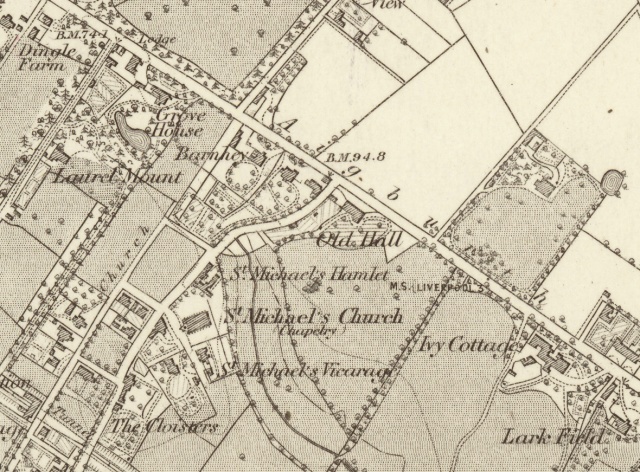
Ordnance Survey 1850: National Library of Scotland.

Some time between 1835 and 1845 the house was enlarged to the north (left on the map) (now the shops including Tesco).
On the Tithe schedule for 1845, the house and land connected to it is shown as being owned by William Beckwith and occupied by James Dalglish. I have coloured the plot owned by Beckwith green.
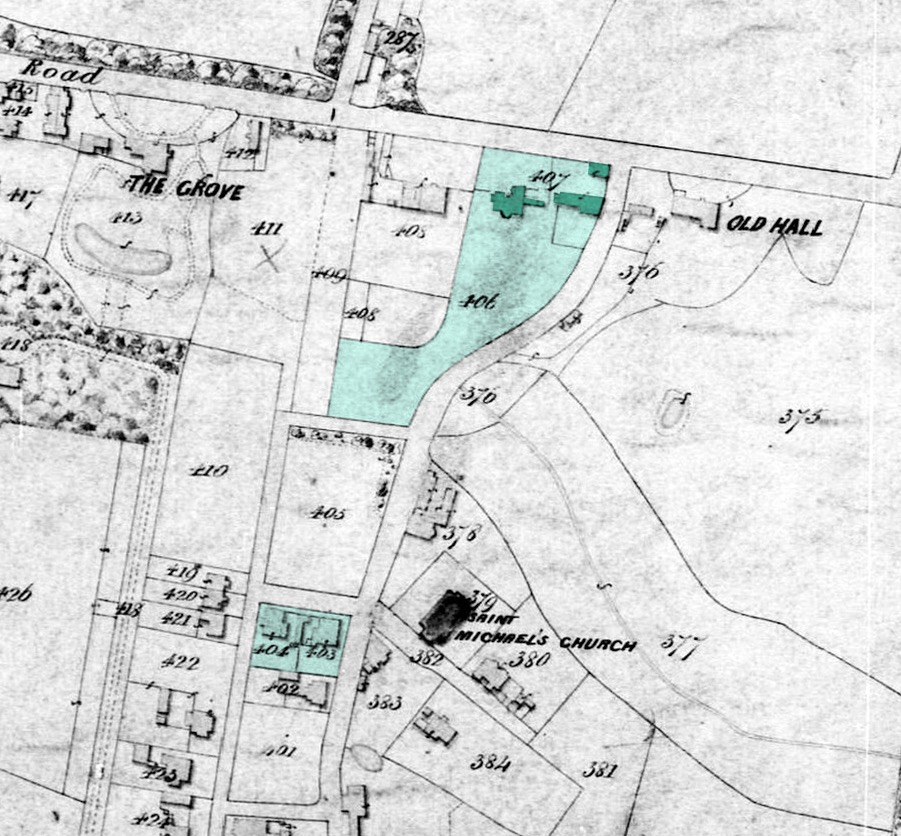

Beckwith’s will (proven 1844) states that his son William erected the house (1835 and 1845). This could mean that he extended or modified the earlier house that was there before 1818:
my said William has recently erected a dwelling house and other buildings
Beckwith was an attorney in Liverpool, but there are links to the slave trade. A William Beckwith appears on this mug made in 1797 showing the flags of merchants ships that would be raised on Bidston Hill indicating the ship had arrived back in the Mersey. A John Beckwith was a slave ship owner.
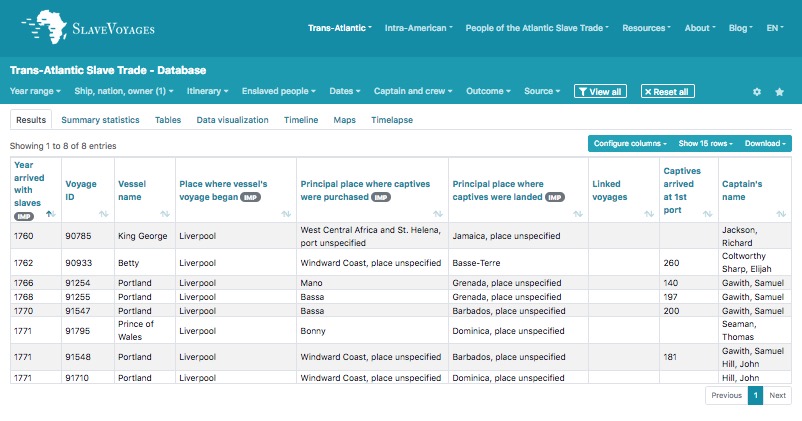
James Dalgish (the occupier) was born circa 1804. This beautiful locket was made to commemorate his life:-
This antique round locket was made to commemorate the life (and death) of James Dalglish. We can tell from the inscription on the back that he died on the 30th of June 1863, aged 59, but census records reveal that he was born in Glasgow in 1804, before moving to Aigburth Road in Toxteth Park, Liverpool, some time before 1851. His occupation is listed as South American Merchant… most likely as part of the textiles trade that was big business between the UK and South America throughout the 19th Century. The front of the locket is finished in black enamel, and features a diamond-set star motif with a pearl to the centre. It’s modelled in 15 karat gold throughout, and the locket panel to the reverse still holds a lock of his hair.
www.1stdibs.com

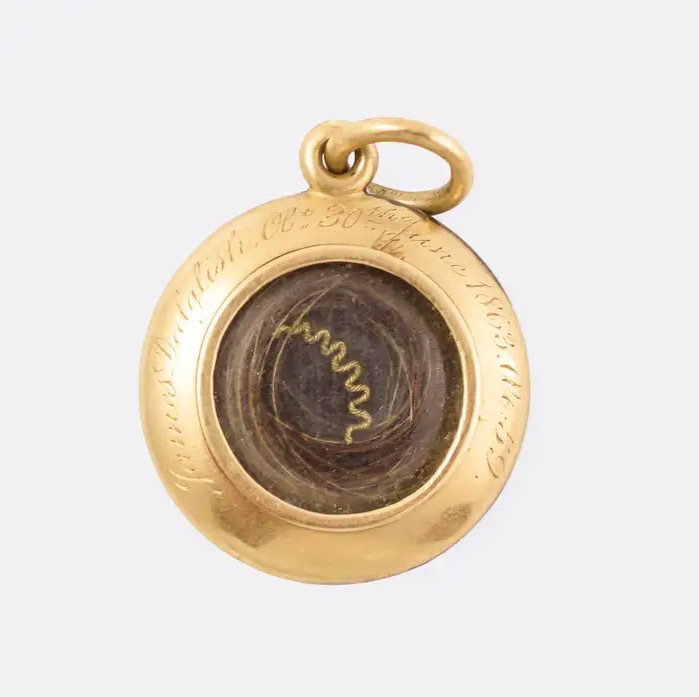
Dalglish’s business in Liverpool was known as JAMES DALGLISH & COMPANY. They traded in Rio de Janeiro, under the Firm of JAMES DALGLISH, THOMPSON, & COMPANY.
When the house was put up for sale after Dalglish’s death, no name was given to it:
The next recorded occupant of the house was Thomas Irvine (1818-1907). He was head of the Liverpool stockbrokers firm in Liverpool, T. and T.G. Irvine in India Buildings and was a Justice of the Peace. The 1881 census is shown below.
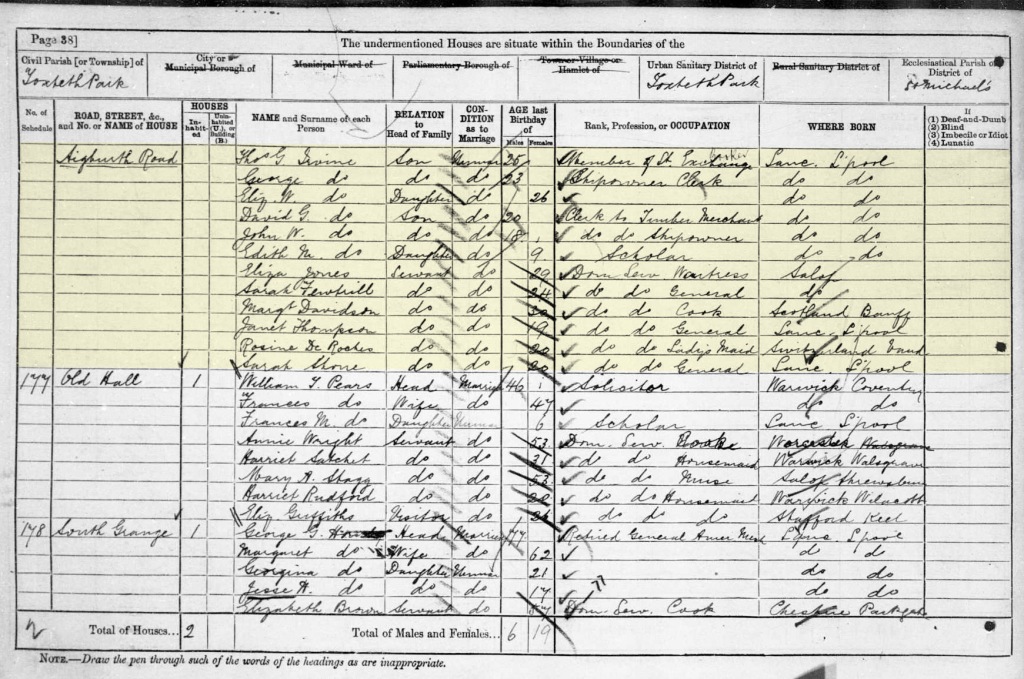
A photograph of Thomas Irvine and his family crest are shown below.
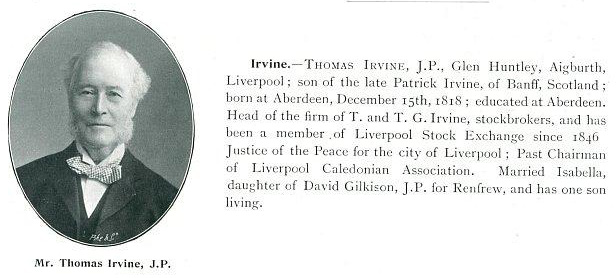


How the house got its name
In 1853, Thomas Irvine (originally from Banff, Scotland but living in Liverpool) married Isabella, the youngest daughter of a shipbuilder David Gilkison of Glenhuntly. The marriage took place at Glenhuntly, Port Glasgow.
David Gilkison died at Glenhuntly, Port Glasgow three years later on 23rd June 1856. Glenhuntly Avenue in Port Glasgow now marks the location of the since demolished house.

When Irvine took over the house on Aigburth Road he named it after the place where he was married and the home of his wife.
A bell to warn of robberies
In his book “The History of the Royal and Ancient Park of Toxteth”, Robert Griffiths mentions a bell on the roof of Glen Huntly to warn villagers of the presence of robbers. There was a rise in crime due to the Corn Laws (1815 – 1846) and Liverpool’s Police Force wasn’t formed until 1836. The Cloisters House and St Michaels Church also had warning bells (St Michaels’ bell was stolen). Further information appears in “Recollections of Old Liverpool, by A Nonagenarian” (James Stonehouse) published in 1863:
In the year 1816, in consequence of the high price of provisions, as mentioned in a former chapter, many persons rendered desperate by their wants, formed themselves into gangs of robbers, and committed many daring acts of depredation. Travellers were constantly stopped, ill-treated, and robbed on the roads in the vicinity of the town; and scarcely a day passed, without intelligence arriving of some house in the outskirts being attacked and plundered. To such an extent was this carried, that people commenced forming themselves into associations for their mutual protection. In Toxteth Park, this was especially the case, as several very serious robberies had been reported in that neighbourhood. It must be remembered that at that time Toxteth Park was but thinly populated. There were only a few good houses in it, occupied by highly respectable families, for the salubrious air of “the Park,” and the beautiful views of the river from many parts of it, gave it attractions to those who could live out of town. It was, amongst other things, proposed, I recollect, to have as protection, large and sonorous bells put up on the tops of the houses, so that on the least alarm of thieves, the bells might be rung to arouse the neighbours. Such precautions will be laughed at now-a-days, but something was necessary to be done at that time, when policemen were unknown, and personal protection was by no means much regarded. It was no uncommon circumstance for persons who had occasion to go out at night, to carry a brace of pistols with them; but whether they would have had courage to use them or not, I cannot say, but the fact of having such things at hand were crumbs of comfort to timid people.
Recollections of Old Liverpool
Information from someone who lived at the house
I was delighted to receive information about the house and these evocative photographs from Geraldine Owens who lived there:
This is my grandma’s wedding in 1916 (below), the Owens’s and Sale’s have been Toxteth people for generations. The photo was taken at the rear door of the Glen Toxteth. It was taken a short time after the wedding (I think she said in August) the photographer could not set up on the wedding day (quite usual, if you take into account the number of studio pics of the era Foulds & Hibbert, come to mind). They lived (and my aunt is there still age 86) in Thirlstane Street, and Dalmeny Street, and the Sale’s were auctioneers/pawn-brokers) Grandad was a boiler maker/engineer of Welsh stock. The very handsome guy between the couple is Sid Owens father of Alun Owens the 1960s Liverpool Sound Playwright, script writer of Hard Day’s Night.
Thirty years later my dad became caretaker of the Glen Toxteth and it became our home! I was actually born there (sort of near the wines and spirits aisle – so they told me!). So, I can take you on a guided tour if you like?…. sadly it’s a virtual tour. Dad had little to thank T & S Cohen and the Conservative Councillor (Cllr Nixon) who made us homeless in 1960. The Tory was particularly nasty to my mother refusing to consider her for a council home – “Have some more children!” he told her. The Glen was pulled down in 60 for Tesco. I believed the House had earlier been a much grander affair with stables and cottages dotted around it – outbuildings in the vicinity of Mr Roughley’s paper shop pre-dating the building of Thirlstane street. Also there was extensive stables and a grooms cottage where the Mayfair was.
To give you some idea the Frontage was similar to the rear entrance of Sudley House, however it WAS NOT a grand house! it is so hard to find examples of 18C stone built architecture; I’ll describe The Glen; set back from the road with double gates and drive, yellow stone, lowish/two-storey but wide with caretaker lodge to the left hand side. Inside, Wide hall, sweeping staircase Mr Rose’s office to right, ballroom to rear with two French windows leading onto a bowling green, overgrown open ground to the rear of that; lots of upstairs rooms – some empty. We had lounge, living room, kitchen, (very damp!), two large upstairs bedrooms bathroom, our own front door and internal door into the big entrance hall. Interestingly, The Mayfair Cinema Manager next door to the Glen used to have deliveries of reel-film sent to the Glen for safekeeping. So there really was a time when Charlton Heston, Betty Hutton and Jimmy Steward resided in our kitchen – well, if only until the afternoon matinée.
Geraldine Owens
Smoking concerts were live performances, usually of music, before an audience of men only; popular during the Victorian era. These social occasions were instrumental in introducing new musical forms to the public. At these functions men would smoke and speak of politics while listening to live music. These popular gatherings were sometimes held at hotels.
Wikipedia
The site now
The house on Aigburth Road occupied the area of the present shops between Home Bargains to the delivery road before where “The High Street Solicitors” is today. Glen Toxteth was a later name for the same building. My sister Joan recalls the house was a ballet school in the 1950s. In 1962 the house was demolished to make way for the Heron House block of shop, this included a Tesco, a wimpy and a chemist. Aigburth Road was later widened around 1971* to become a dual carriageway. In the top photograph of the Mayfair you can just make out Glen Huntly / Glen Toxteth in the background on the right. In archives for Edmund Kirby held by the Liverpool Record Office from 1936, a year before opening, the planning application is for “Glen Cinema” a reference to Glen Huntly.
*I originally thought it was 1964
A stone gate posts still exists next to the solicitors (the old newsagents) on close inspection the name ‘Glen Huntly’ can still be made out. This wall connected to this post used to run the length of the building but has been rather crudely cut in half to make way for windows.
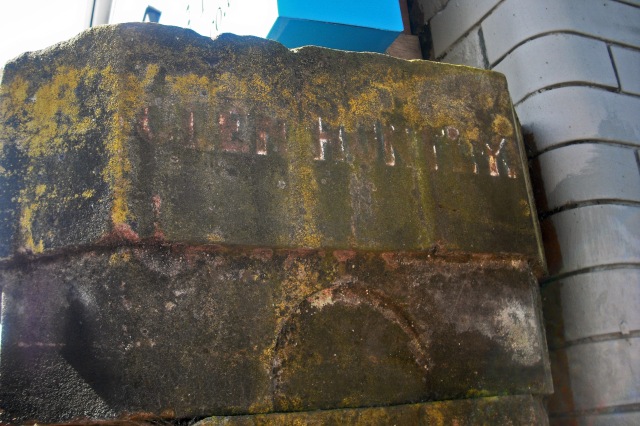
Laurel Mount, Demsey’s Hollow

Ordnance Survey 1850: National Library of Scotland.
The first record is for the houses Grove House and Laurel Mount owned by James Dempsey, Timber Merchant, land owner and friend of John Sothern of The Priory. The land these houses occupied spanned Belgrave Road to Alwyn Street but Dempsey also owned Barn Hey.
Dempsey was also a ship owner and partner in Dempsey & Pickard & Co with James Pickard and another partnership with Richard Hall. He died around 1846 as the property appeared for sale that year (see below).
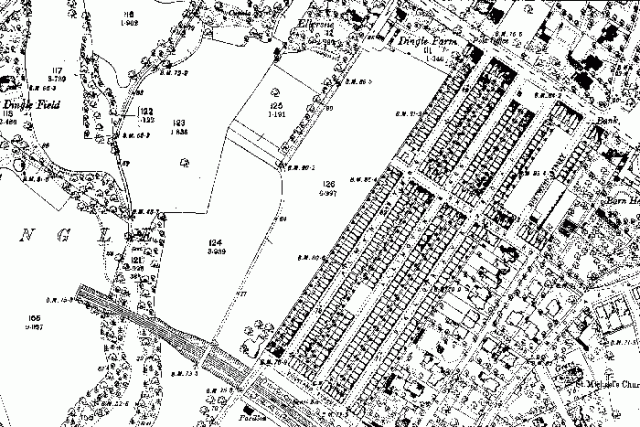
Death of James Dempsey and the sale of Laurel Mount
It is interesting to see that the property included shops of Knowles and Howell, at least 40 years before the present shops. Park Lane is the old name for Aigburth Road, another property on 95 Park Lane is a “Dwelling House and Spirit Vaults”. The area never had many public houses compared to other areas, (still doesn’t) and press articles from the 1880s chronicle the battle between the Toxteth Park School and the Brewers keen to open new pubs to cater for the thousands of new occupants in the newly built terraced houses, one pub was planned for St Michael’s Road. These terraces were built on the “Laurel Mount Estate” and the “Old Hall Estate”. The advertisement also mentions a property in Rock Ferry, I believe the Dempsey moved over to the Wirral with properties in Wallasey and Noctorum.
The Bolton’s and John Hulley of ‘Olympic Festival’ fame
In the 1840’s, Laurel Mount was home to Archibald Maxwell Esq, his name appears on the advert above. In the mid 1800s it was occupied by the Bolton family, Miss Georgiana Bolton, daughter of Robert Lewin Bolton and Theodosia Sarah Holt, and grand-daughter of the Mr. Thomas Bolton, Mayor of Liverpool.
Two men at any rate in my day still adhered to the swallow-tail coat and they added the white choker of many plies. Both were, of course, advanced in years and were regarded as ‘characters’—Dawson, of the Canon Iron Company, and Bolton, a merchant of intermittent but very large transactions. His house—now gone and the land built over—lay in Dempsey’s Hollow, off the Aigburth Road, close to my present house. He was credited with breakfasting there at two p.m., and the four o’clock omnibus brought him into town direct to the Exchange Newsroom.
http://www.electricscotland.com/History/pollock/chapter16f.htm
In 1864, Bolton claimed for compensation when the new Garston to Liverpool Railway cut through his land, he was awarded £2,167 plus expenses. Bolton died at Laurel Mount, aged 76 in 1882.
Georgina married John Hulley, founder of the Olympic movement.
On 16 July 1869 at the Ancient Unitarian Chapel, Toxteth Park, John married Georgiana Bolton, only daughter of Mr. Robert Lewin Bolton, merchant of Liverpool and granddaughter of the late Mr. Thomas Bolton who was Mayor of Liverpool in 1840. The marriage was an explosive affair: the father by some means had learnt of the proposed nuptials, and at once put in force parental authority to prevent its being carried out to its full fruition. The means taken for this purpose were of the most effectual character. The lady was locked in her chamber, and to all her entreaties “the father was flint and the mother was stone”. However, love prevailed in the face of adversity and thanks to assistance by friends, the happy couple tied the knot a day later. This attracted widespread press coverage throughout the country and several reports of the on-off-on marriage filled the columns of many newspapers for several days after the event. A daughter, Georgiana Theodosis, was born in Liverpool in December 1870.
http://en.wikipedia.org/wiki/John_Hulley

Below is the Wikipedia entry for John Hulley:
John Hulley (19 February 1832 – 6 January 1875) was an English gymnastics and athletics entrepreneur who encouraged public participation in physical education to improve health and well-being, and was one of the instigators of the Olympic movement in Britain. At his Liverpool Gymnasium in 1865 he established the National Olympian Association, the forerunner of the British Olympic Association. With William Penny Brookes and Ernst Georg Ravenstein, he organised the first National Olympian Games in 1866. He organised a series of Assault-at-Arms gymnastic events in Liverpool and Manchester. He organised six Olympic Festivals between 1862 and 1867 in Liverpool and Llandudno. With Robert B. Cummins, he exposed American magicians the Davenport brothers. He introduced the velocipede into Liverpool.
http://en.wikipedia.org/wiki/John_Hulley

The Davenport Brothers, exposed by Hulley and Cummins, were American magicians in the mid 1800. The brothers presented illusions claimed to be supernatural, Liverpool on the other hand was having none of it and resulted in a riot.
The Davenports’ most famous effect was the box illusion. The brothers were tied inside a box which contained musical instruments. Once the box was closed, the instruments would sound. Upon opening the box, the brothers were tied in the positions in which they had started the illusion. Those who witnessed the effect were made to believe supernatural forces had caused the trick to work. They toured the United States for 10 years and then travelled to England where spiritualism was beginning to become popular.
Although their stay in London was somewhat successful, the Davenports met with open hostility in the countryside. In Liverpool, for example, two members selected from the audience tied the mediums with a peculiarly intricate knot. The mediums protested that it was unfairly tight and injured their circulation. A doctor from the audience made an examination and pronounced against them. The Davenports refused to sit and asked Ferguson to cut the knot. The next night a riot broke out and the party left town. At Hull, Huddersfield, and Leeds they found a hostile public, inclined to lynch them. Since they did not find the police protection sufficient, they broke off their engagements and returned to America.
The two members selected from the audience in Liverpool were John Hulley the famous gymnast, and Robert B. Cummins. Their confrontation with, and eventual exposure of the Davenport Brothers filled many column inches of both local and national newspapers for several weeks after the event.
The Davenports’ exposure also led to a County Court action being brought by Cummins to recover the entrance fee of five shillings paid to see a seance which did not come off. The judge found against Mr Hime, the Liverpool agent of the Davenports who agreed to repay all persons affected.
http://www.johnhulley-olympics.co.uk/Davenport_Brothers.shtml

Liverpool Mercury, February 1865. Courtesy of British Newspaper Archive ©. Click to open in another window to read.
Edward Askew Sothern (Lord Dundreary) who had lived at The Priory also had criticised the Davenport Brothers, although somewhat hypocritically.
In 1865 a man calling himself “Dundreary” (after the character of Lord Dundreary in “Our American Cousin”) wrote a letter to the London theatrical journal The Musical World and to a Glasgow newspaper humorously decrying an article by Benjamin Coleman in The Spiritual Magazine of London that had described the wonders of a “Miracle Club” formed in New York in the late 1850s under direction of an actor named Edward Askew Sothern. The article had accused Sothern of performing wonders as a “most powerful medium” in New York and then of hypocritically condemning the phenomena of the Davenport Brothers once he was back in London. The letter by Dundreary (or, to give him his real name, Sothern) and the barbs in response in The Spiritual Magazine and The Spiritual Times which followed resulted in a punitive lawsuit by Sothern against Coleman and Robert Cooper, the publisher of The Spiritual Times, the imprisonment of Cooper for criminal libel, and the bankruptcy and dissolution of The Spiritual Times and its companion, The Spiritual Lyceum.
Emma, Benjamin Coleman, and E. A. Sothern
Copyright notice:
Copyright of original archive images belongs to those named below the images. All original research, photographs taken by ourselves, illustrations, artists impressions, and archive images and maps that have notes added are all ©Glen Huntley. Permission to share is only granted if the site is credited and a link provided.
Further reading:
There is an excellent website dedicated to John Hulley, whom before I found his name for this blog, was unknown to me. I recommend anyone interested in Liverpool’s history to visit it. http://www.johnhulley-olympics.co.uk
More about Lord Dundreary here: https://theprioryandthecastironshore.wordpress.com/2012/12/06/7/)
Excellent website on Liverpool cinemas: www.picturepalace.org
Amazing high resolution Ordnance Survey maps.
“Screen prints may be made of these maps for non-commercial, educational and private purposes. Written permission must be obtained in advance to reproduce any digital material from the National Library of Scotland’s collections, whether in hard copy or electronic forms”.
South Liverpool:
http://maps.nls.uk/view/102344123
Central and North Liverpool:
http://maps.nls.uk/view/102344096
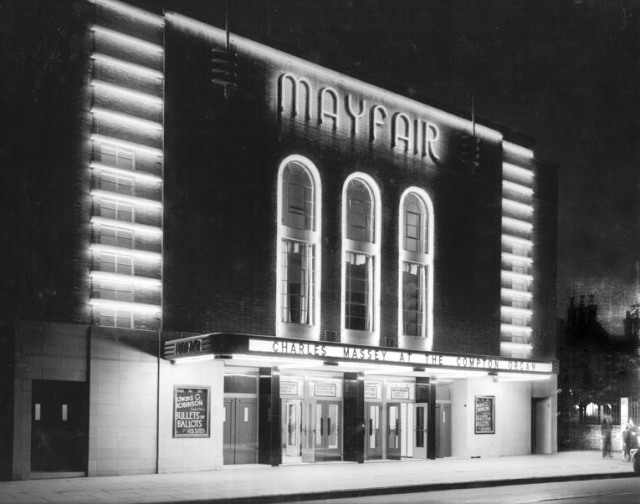
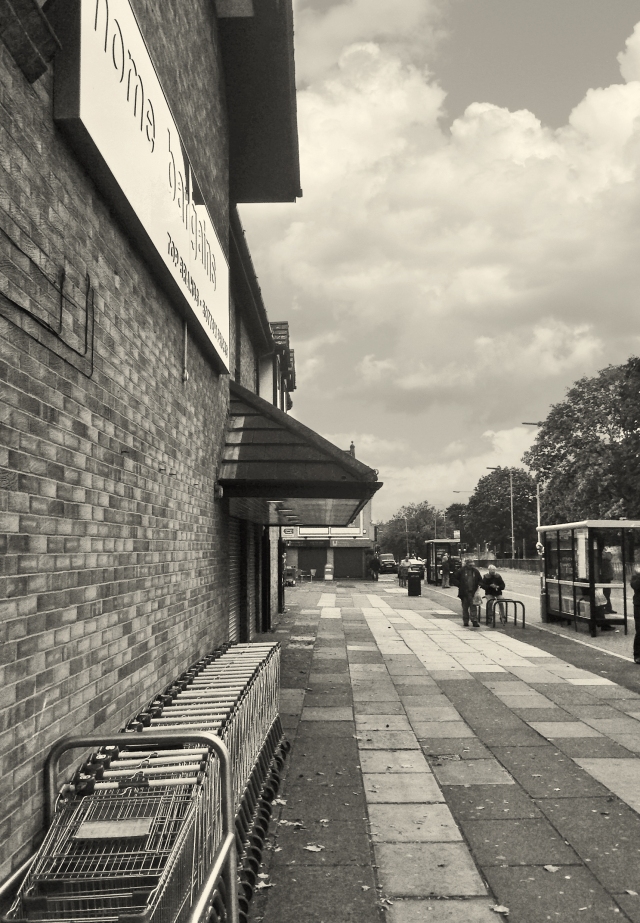
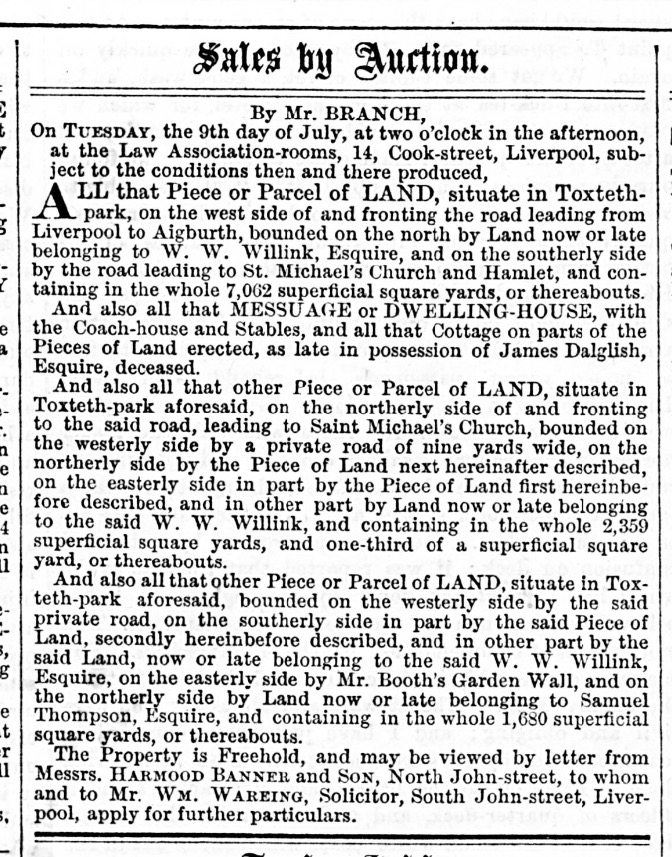

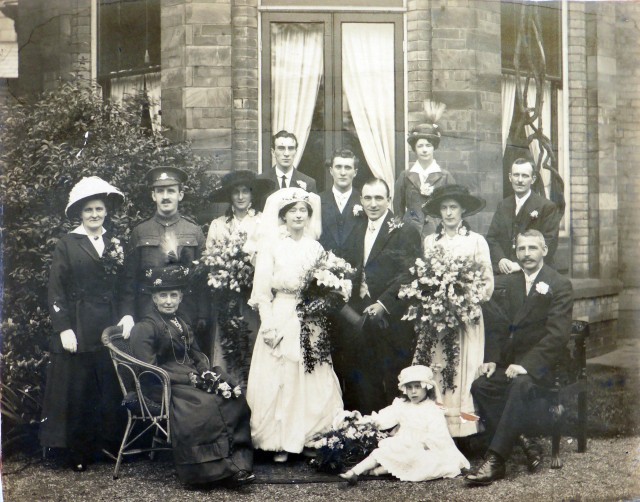
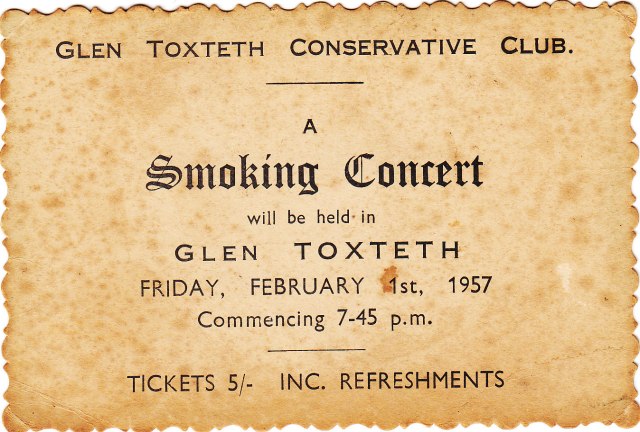
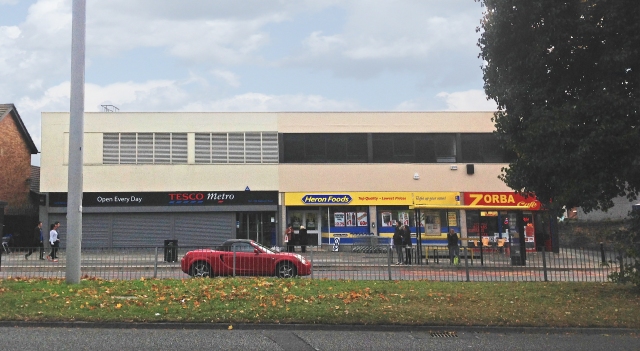
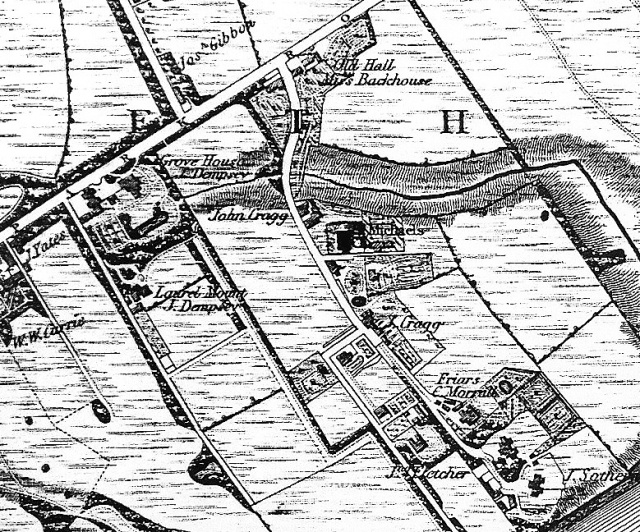

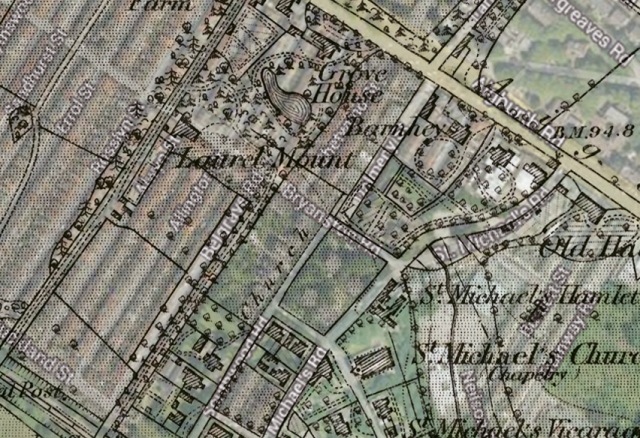

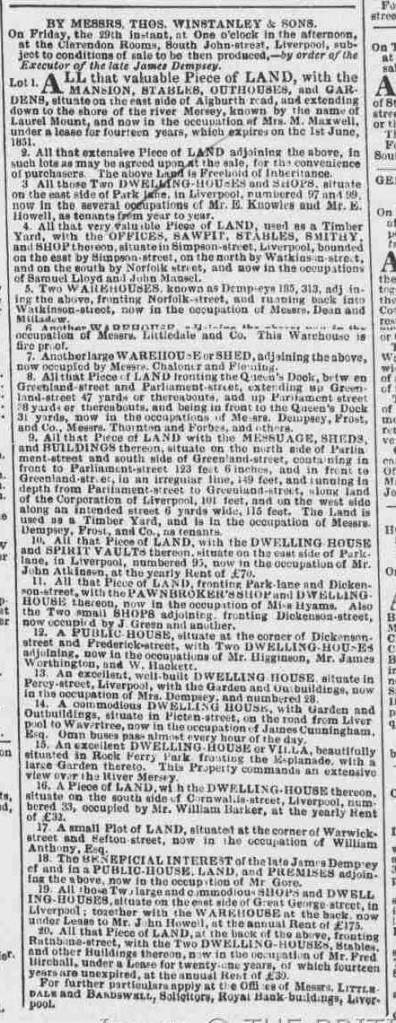
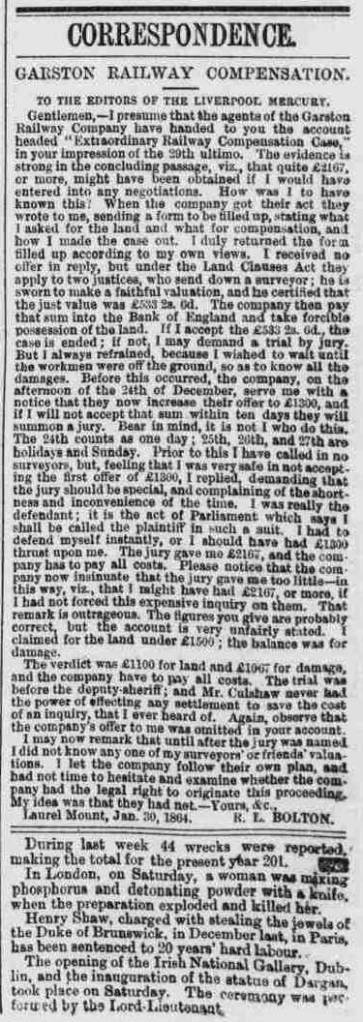

Delighted to come across this blog! My husband, Eamonn Bolton is the great, great, great grandson of Robert Lewin Bolton and I have been doing research on his family for a few years. We were aware of the marriage of Georgiana to John Hulley but the insight into RLB’s life and work style is fascinating! Thank you.
Hello Zita
I’m glad you enjoyed it and it was of some use to your family. Have you looked in the British Newspaper Archive for him? I remember when I was researching him that he was in quite a few articles. If you have not used that site before look out for special offers as sometimes it is only £1 for the first month. If not it is very reasonable anyway. If you find anything really interesting let me know!
Marriage: 10 Mar 1880 St Michael in the Hamlet, Aigburth, Lancashire, England
James Denham – 29, Collector, Bachelor, Laurel Mount Aigburth
Sarah Ann Taylor – 24, Spinster, Laurel Mount
Groom’s Father: Richard Denham, Deceased
Bride’s Father: Robert Taylor, Deceased
Witness: Wm. Thos. Taylor; Euphemia Mc Gregor
Married by Banns by: Jos. B. Lowe
Register: Marriages 1878 – 1880, Page 238, Entry 475 This is the information I have for my Great great grandparents and coming across your blog it got me to thinking that that possibly my family lived in the houses as servants or James might of been a merchant seaman. I have no information on them, so reading your blog also gave me a wonderful insight into what the St Michael’s Hamlet was like so Thank you
Hi Victoria, I am only seeing your post here now. My husbands ggg grandfather Robert Lewin Bolton was the owner of Laurel Mount, Aigburth in 1880. He died in 1882. His wife was Theosdosia Sarah nee Holt. She died in 1878. It is possible that your gg grandparents were servants at Laurel Mount. I will try to see what I can find out.
Hi Victoria, I’m glad you were able to find some information, thanks for your comment.
Hi, glad you enjoyed it. Funny, I’ve been meaning to go back to James Dempsey recently. If you have any information to share I’d love to include it. I’d like to do a feature on him. What part of Ireland was he from?
What a fascinating account. James Dempsey of Liverpool was my gt.gt.gt. grandfather. He was the Taoiseach of one of the oldest families in Ireland.